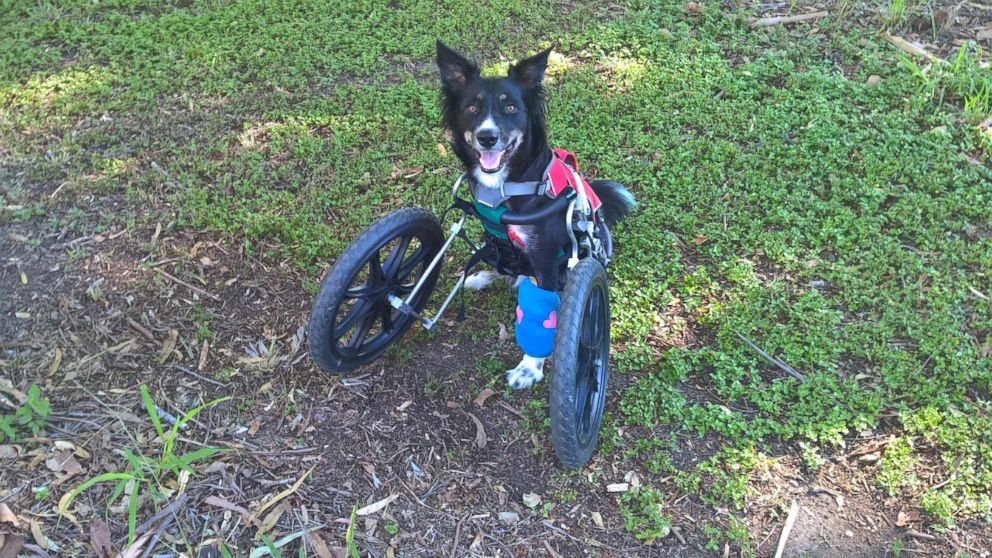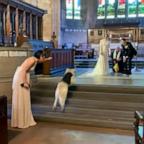3-D Printing Helps Three-Legged Pup Run Again
Ziggy the three-legged pup is able to run again thanks to a special wheelchair.

— -- Thanks to cutting-edge 3-D printing technology, an Australian dog will be able to run and play without pain for the first time since he was a puppy.
Named "Ziggy," the border collie was found abandoned in 2014 with a deformed front leg, according to the University of Queensland Australia. Veterinarians were able to remove the leg and soon after students Rebcca Colvin and Glenn Althor adopted the puppy.
“He was a happy little puppy and didn’t mind at all that he only had three legs,” Colvin said on the University of Queensland Australia website. “However, a few months later we started to notice that he wasn’t walking well. He was limping, and seemed to be in pain.”
Ziggy's veterinarians discovered growth plates in his remaining front leg had been damaged due to the increased pressure from only having three legs.
“We knew we needed to save Ziggy’s remaining front leg to give him a chance at a normal active life,” said Dr. Jayne McGhie, of the University of Queensland School of Veterinary Science. A corrective surgery to help stabilize his leg as he grew bought the veterinary team some time, but he needed more extensive surgery to straighten his leg, according to the University of Queensland website.
Finally, multiple team members from the School of Veterinary Science were able to study Ziggy's leg and model it with 3-D printing technology.
“They helped with 3-D modelling so our students were exposed to the latest surgical planning techniques," McGhie said on the University of Queensland website. "CT scan images of Ziggy’s leg were used to create computerised and printed three-dimensional models of his limb. These models were then used to calculate where the bone had to be cut and how it had to be manipulated to straighten the limb so Ziggy could walk normally.”
The practice allowed the team to confidently correct Ziggy's damaged front leg and he'll likely be able to soon run and play on his three feet without any help, the veterinarians said. Though he's currently using a special wheelchair, he's been able walk on his repaired leg without assistance.
"He's got a very, very bright future," McGhie said. "We think he will be a happy, healthy active dog."




